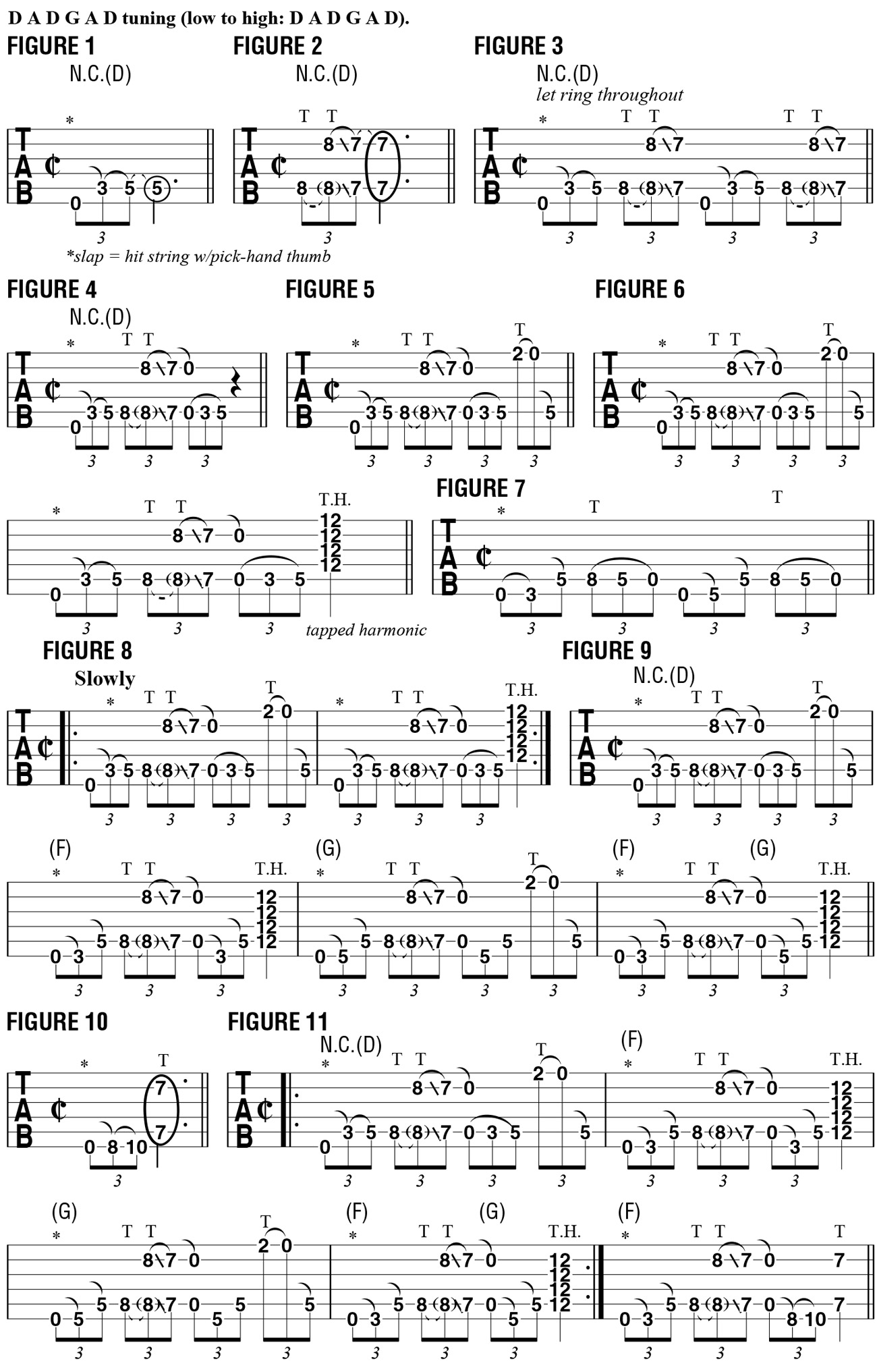More on the Intricate Two-Hand Tapping in “Boogie Shred”
“Boogie Shred,” from my 2013 album What Just Happened, is the very first song I ever wrote on acoustic guitar. In my column that appeared in the Holiday 2016 issue of Guitar World, I had broken down the tune’s intro and verse sections, and I’d now like to return to the piece to demonstrate its cool middle section, which I perform entirely with fret- and pick-hand tapping.
I think of these tapped figures as being “vertical,” as opposed to “horizontal,” a horizontal tapped figure being one that moves up and down a given string, à la Eddie Van Halen’s “Eruption” solo, and vertical tapping being where multiple notes are tapped across different strings in a given position in order to sound harmonies and octaves with a single hand.
Although this passage of music might seem intimidating, it is actually one of the easiest licks of mine to perform. It’s all about the delegation of responsibility between the hands. The figures are based on alternating between the two hands, so there are no inordinately fast movements required of either. To me, it’s like playing a roll on a snare drum, where both hands work in tandem to create the sound as opposed to frantically trying to play a blast beat with one hand!
“Boogie Shred” is performed in DADGAD tuning (low to high, D A D G A D). The middle-section figure that I’m going to show you is based on four groups of three, in that three evenly spaced notes are sounded on each beat. As shown in FIGURE 1, on beat one, I begin with a slap of the open sixth string, followed by hammer ons to the third and fifth frets on the fifth string. FIGURE 2 illustrates beat two, wherein the pick-hand index and middle fingers tap the fifth and second strings at the eighth fret, sounding an F octave. I then slide both fingers down to an E octave at the seventh fret. Practice these two sequential figures repeatedly to get them under your fingers, as shown in FIGURE 3.

FIGURE 4 reveals what occurs on beat three, a pull-off to the open fifth and second strings followed by a repeat of the third-to-fifth fret hammer-on on the fifth string; FIGURE 5 completes the bar with the final three-note motif on beat four, consisting of a pick-hand tap onto the first string’s second fret, followed by a pull-off to the open string and a fret-hand tap onto the fifth fret of the fifth string. And as shown in FIGURE 6, this is played as a two-bar repeated form, with a tapped harmonic substituted on beat four of the second bar, performed with the outstretched underside of the pick hand’s index finger striking the top four strings at the 12th fret all at once.
Another twist is the changing of the bass notes as the lick progresses, as shown in FIGURE 7. Notice that on beat one, I follow the open sixth string with an F note at the third fret, and on beat three I follow the open sixth string with a G note at the fifth fret. FIGURE 8 serves as a recap of the primary part, which you should play slowly and deliberately in order to focus on your dynamics (volume contrasts).
In FIGURE 9, I incorporate the different bass notes from FIGURE 7 into the complete pattern. This phrase then repeats but with a slight variation the second time around. As shown in FIGURE 10, I move the fret-hand taps up to the eighth position and cross over with my pick hand to tap an E octave.
FIGURE 11 presents the passage in its entirety; work through it slowly and then, as the various elements come together, gradually build up the speed to the tempo on the recording.
Get The Pick Newsletter
All the latest guitar news, interviews, lessons, reviews, deals and more, direct to your inbox!










